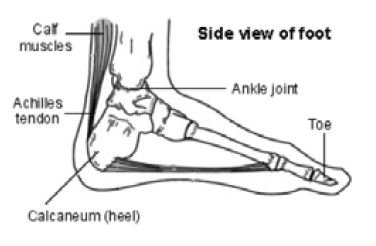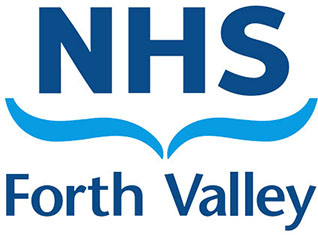 The aim of this advice is to give you some understanding of the problems you have with your heel and to provide some advice on how to manage this. It is not a substitute for professional healthcare advice and should be used along with information you may be given by your GP or Allied health professional.
The aim of this advice is to give you some understanding of the problems you have with your heel and to provide some advice on how to manage this. It is not a substitute for professional healthcare advice and should be used along with information you may be given by your GP or Allied health professional.
Causes
- Being overweight
- Unsupportive foot wear
- Ageing
- Flat feet or high arches
- Continual walking on concrete floors
- High impact activities
- Tight calf muscles
- Increased risk with diabetes
Treatments
Foot wear
Shoes that are worn or give poor support will exacerbate the problem. A well fitted shoe that gives support across the base of the toes is recommended. Arch supports may be beneficial or cushioned heel pads and soles may give some relief.
Weight loss may help if you are over weight. Stretches for the calf muscles:
A: Stand holding onto a wall or chair with the painful foot
behind. Lean your body forwards keeping the heels on the
floor.
B: Stand in a walking position with the painful foot behind.
Hold on to a support. Bend the back knee so that your body
weight stretches the deep calf muscle without lifting the heel
off the floor.
Exercises
All exercises should be relatively comfortable to do. If you have pain on a specific exercise that does not settle quickly, you should stop that exercise
 Exercise 1
Exercise 1
Sitting with the foot flat on the floor – press the toes down keeping them straight and let the arch rise up.
 Exercise 2
Exercise 2
Standing, balance on the painful leg only, then push your toes down onto the floor, lifting your arch as exercise 1
General Advice
- Ice may help during the early acute stages to help with the heel pain. Wrap a packet of frozen peas in a damp cloth and place on your heel for 5 minutes if the skin is pink then apply for 5 more minutes. If the skin is white then remove the ice immediately. Ice can be applied twice a day if it is helping.
- Massage around the painful heel to help the circulation.
- When climbing stairs put your whole foot on the step, not just the front of your foot.
Medication
Many people use medication to help them remain active and to cope with their pain and symptoms. It is recommended that you take your medication regularly. It is best to get advice from a GP or pharmacist.
Other Intervention
There are other health interventions which may be more appropriate for your condition. These can be discussed with your health care practitioner.
Work
It is usually recommended that you try to stay at work or get back to work as soon as possible. You do not need to be fully pain and symptom free to return to work. Research shows the longer you are off work the less likely it is that you return.
Investigations/do I need any special tests
The main way we diagnose your heel pain is through what you tell us and by examining your heel. Other investigations may be considered, these can be discussed with your health care professional.
Try to stay positive. There is a lot you can do to help yourself. Most symptoms do settle with time

